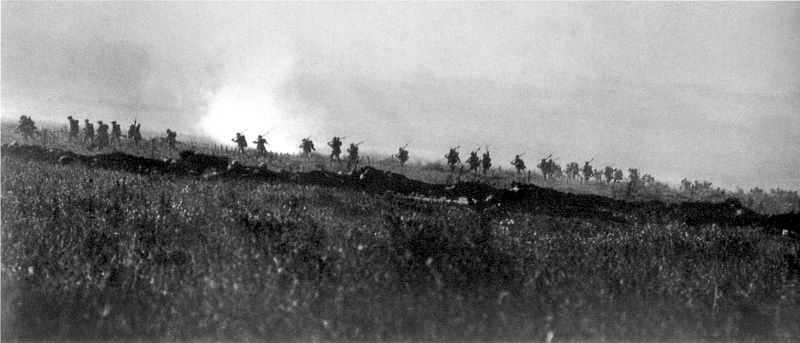
Figure 1 – The Tyneside Irish Brigade advancing on the first day of the Battle of the Somme, July 1, 1916. Taken by an official of the British government and in the public domain in the US and UK by virtue of its age.
As we attempt to deal with “the unspeakable” in our own time, we are ever shadowed by the Great War that played out exactly a century ago. July 1, 1916 marked the start of the Battle of the Somme. Ultimately it lasted from July 1 to November 18, 1916 and was fought on both sides of the upper reaches of the River Somme in France. It was the largest battle of the First World War on the Western Front. More than one million men were wounded or killed, making it one of the bloodiest battles in human history. July 1, 1916 itself was the bloodiest day in British military history.
When the British went “over the top” they suffered 57,470 casualties. This was, greater than the total combined British casualties in the Crimean and Boer wars. At the end of the battle, British and French forces had pushed the Germans back by six miles. Indicative of the state of stalmate this was the largest gain in territory since the Battle of the Marne in 1914. Historian debate the role of the Somme in the ultimate Allied Victory.
There are many photographs that survive of this battle. Some are real and some were staged at the time to serve government propaganda and news purposes. Figure 1 shows a support company of the Tyneside Irish Brigade advancing from the Tara-Usna Line opposite La Boisselle on the first day of the battle. It was taken by a member of the Royal Engineers No 1 Printing Company. It’s fuzziness and back lighting create a feeling both of surrealism and age. It is reminiscent of Ingmar Bergman’s “Seventh Seal” and the “Dance of Death.” It seems a dim and distant memory or nightmare that still stands to haunt us asking the question both for now and then of “Why?” One point is terribly clear, our ability to photograph wars has certainly not brought them to an end.

Yes, certainly, the iconic dance of death in THE SEVENTH SEAL.
I think it was always on the posters in art theatres, such as the ones at Cornell years ago.